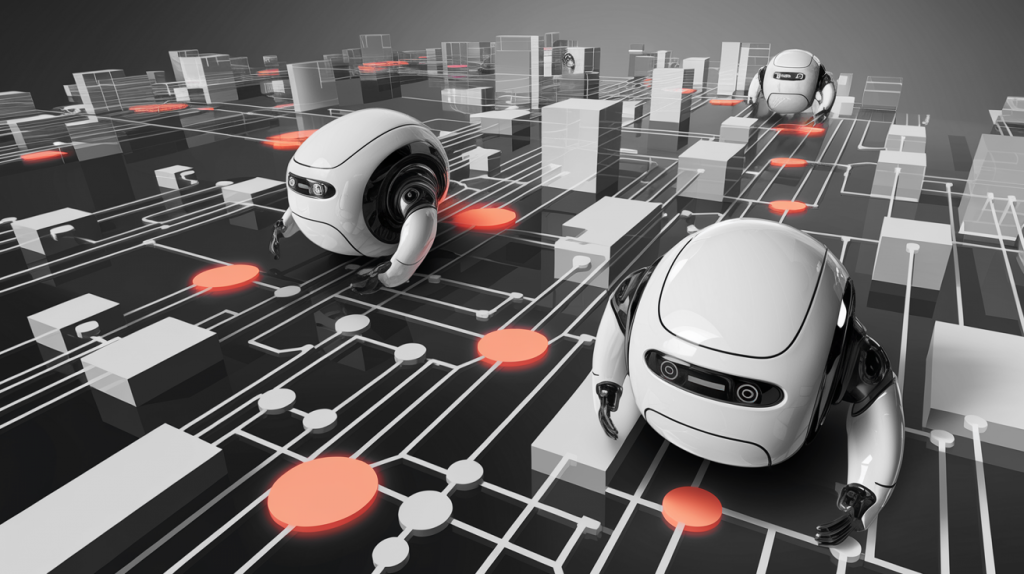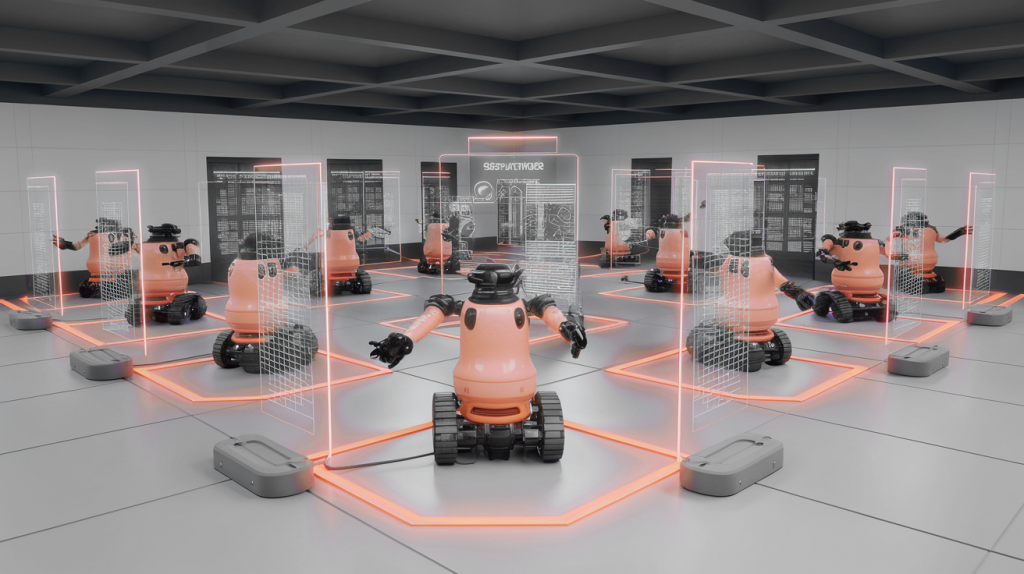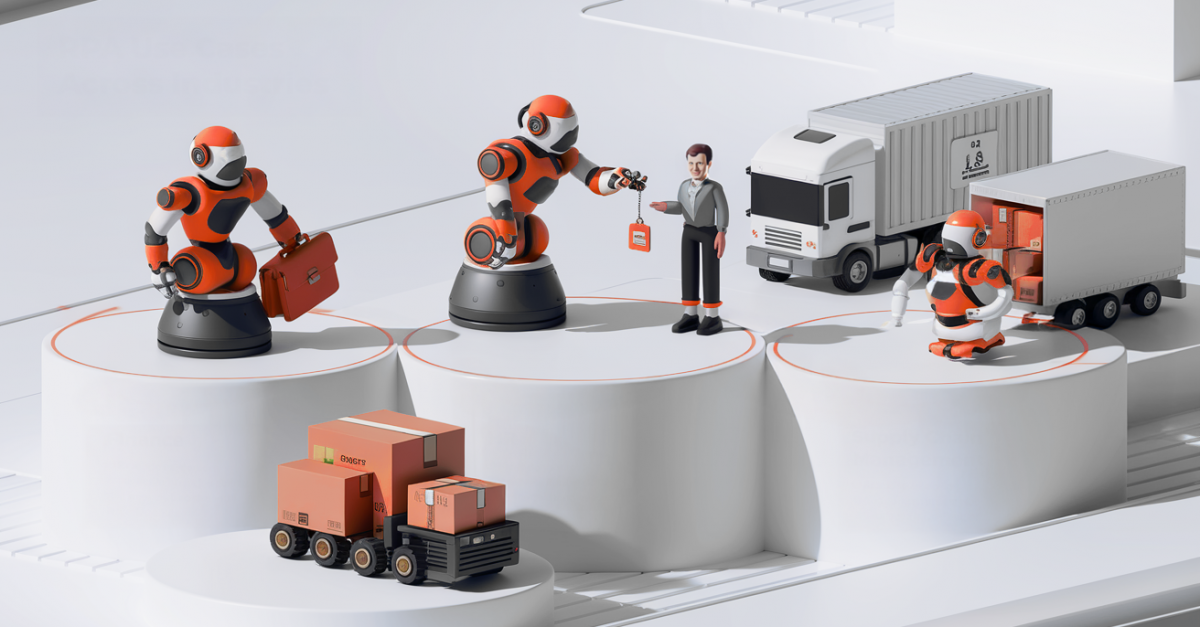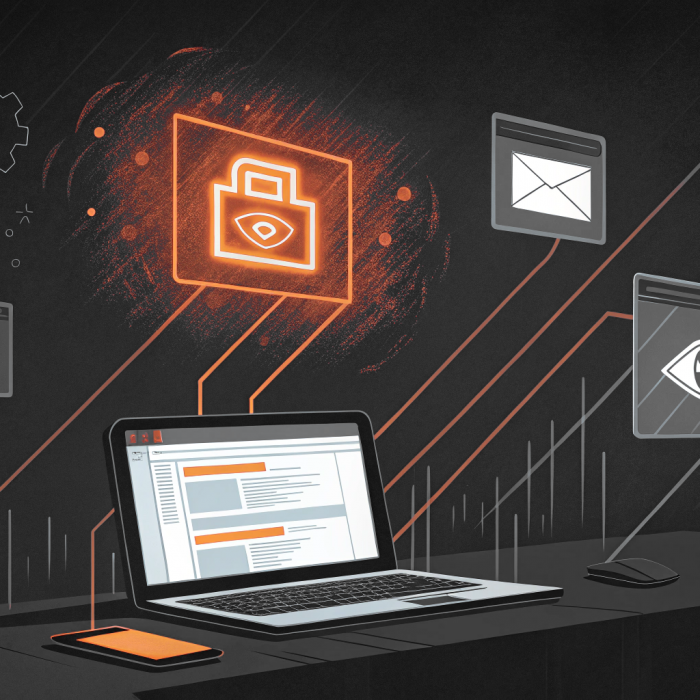RPA bots have quietly become some of your most productive workers. They never make typos, they follow procedures exactly, and they handle tedious tasks your team would rather avoid. The problem is, they might also be your biggest security blind spot.
What is RPA?
Robotic process automation uses bots to handle automated repetitive tasks that would normally require human intervention. These bots can work 24/7 with consistent accuracy.
RPA technology works through software that mimics human interactions with computer systems: clicking buttons, filling out forms, moving files, and processing data. It comes in three main flavors:
- Attended RPA works alongside human employees, needing someone to kick off tasks or make decisions along the way
- Unattended RPA runs completely on its own, handling scheduled work or jumping into action when specific events happen
- Hybrid RPA mixes both approaches, letting bots work independently most of the time while passing tricky stuff back to humans
The technology shines with structured, rule-based processes where outcomes are predictable. RPA bots can work across multiple systems simultaneously, accessing applications through standard user interfaces.
Here’s the thing, though: unlike traditional automation that requires deep system integration, RPA operates at the UI level. This makes it relatively quick to implement, but it also means bots are interacting with systems in ways that weren’t necessarily designed for automated access. That flexibility is exactly what makes RPA attractive and exactly what creates the security headaches we’re about to discuss.
Example Use Cases for RPA
Thanks to how versatile RPA systems are, they’re found in virtually every industry and department.
1. Finance and Accounting – Finance teams rely heavily on RPA for processing high volumes of transactions with accuracy that human workers struggle to match. These bots can work through complex financial workflows while maintaining detailed audit trails.
- Invoice processing and expense report reviews
- Tax calculations and financial reporting
- Account reconciliation and payment processing
- Compliance report generation
2. Human Resources – HR departments use RPA to streamline administrative tasks that traditionally consumed significant staff time. These automations allow HR professionals to focus on strategic priorities rather than paperwork.
- Job application screening and candidate evaluation
- Employee onboarding paperwork and record updates
- Time-off request processing and benefits enrollment
3. Customer Service – Customer service operations benefit from RPA’s ability to handle routine inquiries and updates instantly, improving response times and customer satisfaction while reducing the pressure on human agents.
- Service request processing and inquiry routing
- Customer record updates and account management
- Basic troubleshooting and automated responses
4. Supply Chain Management – Supply chain operations require constant coordination between multiple systems and vendors. RPA bots excel at maintaining real-time visibility across complex supply networks without human intervention.
- Inventory tracking and purchase order processing
- Vendor communication and shipment coordination
- Automated reordering based on stock level monitoring
5. Healthcare Administration – Healthcare organizations use RPA to handle the massive administrative burden that comes with patient care, insurance processing, and regulatory compliance requirements.
- Patient record updates and appointment scheduling
- Insurance claim processing and billing operations
- Multi-system data synchronization
6. Data Migration and Integration – Legacy systems often struggle to communicate with modern applications, creating data silos that hinder business operations. RPA bridges these gaps by automating data movement between incompatible systems.
- Moving data between platforms and maintaining synchronization
- Converting file formats and data structures
- Validating data integrity across system transfers

Security Risks in RPA Implementation
While RPA bots boost efficiency, they also create unique challenges that many organizations overlook during implementation.
Excessive Privileged Access and Poor Credential Management
RPA bots usually need elevated permissions to access systems and do their jobs. But many organizations hand out broad administrative rights instead of limiting access to just the specific functions required.
When an RPA bot runs with full admin privileges, any compromise gives attackers extensive access to your systems. One compromised bot becomes a gateway to your entire network. Attackers can use these elevated permissions to install malware, access sensitive databases, mess with critical system files, or set up backdoors for future attacks.
Making matters worse, RPA systems need to log into various applications and databases. Hard-coded passwords in RPA scripts, shared service accounts across multiple bots, and poor credential rotation practices all spell trouble. When attackers get hold of one set of credentials, they often gain access to multiple systems since many organizations reuse the same accounts across different RPA processes. This means one security breach can snowball quickly, letting attackers hop from system to system until they find what they’re really after.
Lack of Human Oversight
The “set it and forget it” nature of RPA can bite you. Unlike human employees who might notice when something seems off or question weird requests, RPA bots just follow their programming without thinking twice.
A hacked or misconfigured bot might keep processing fraudulent transactions, deleting important files, or stealing data without anyone catching on until major damage is done. This blind execution means security incidents can go unnoticed for weeks or months, giving attackers plenty of time to grab what they want or cause maximum chaos. The same automation that makes RPA efficient also makes it perfect for attackers who manage to take control.
Data Exposure and Compliance Risks
RPA bots handle sensitive information as they shuffle data between systems, creating multiple opportunities for exposure and regulatory violations.
Bots might accidentally copy sensitive data to unsecured locations, send confidential information to the wrong people, or leave data sitting around in temporary files, logs, or cached directories. Since RPA processes high volumes of data, exposure incidents can affect thousands of records before anyone notices. Plus, bots may move data across different security zones or geographic regions, potentially breaking data residency rules.
When RPA bots handle sensitive data improperly, organizations face significant compliance challenges. Violations of GDPR, HIPAA, or other regulatory frameworks can mean substantial fines and legal consequences. Poor RPA security practices can expose confidential data during processing, create inadequate audit trails for compliance reporting, and fail to meet data retention or disposal requirements.
Integration and Development Security Gaps
Aside from access and data issues, RPA systems face technical vulnerabilities in how they’re built and connected to other systems.
Like we mentioned earlier, RPA systems integrate with multiple applications, databases, and cloud services. Each integration point represents a potential security vulnerability that attackers can exploit. Weak API security, inadequate encryption between systems, and insufficient access controls at integration points can all compromise your entire RPA environment. Attackers may target these connections through SQL injection attacks, cross-site scripting (XSS), or distributed denial-of-service (DDoS) attacks that overwhelm RPA systems with excessive requests.
Similarly, RPA bots rely on scripts and source code that define their automated processes. If this code isn’t properly protected, attackers can access these scripts, modify them, and perform unauthorized actions with the bot’s privileges. Unprotected source code also makes it easier for attackers to understand how your RPA systems work, identify vulnerabilities, and plan targeted attacks against your specific implementation.
Managing RPA Security
Securing your RPA systems requires a multi-layered approach that addresses both technical controls and operational processes. Here’s how to protect your automated workforce without killing its efficiency.
Implement Just-in-Time Privileged Access and Credential Security
Instead of granting RPA bots permanent administrative rights, implement just-in-time privileged access that provides elevated permissions only when needed for specific tasks.
Modern PAM solutions can automatically grant application-specific elevation to RPA bots without providing broad admin access. For example, Admin By Request’s EPM product lets organizations provide automated systems with privileges for individual applications rather than system-wide administrative rights. This approach limits the potential damage if a bot is compromised while still allowing necessary automation to function.
The key is applying the principle of least privilege consistently. Give each bot only the minimum permissions necessary to complete its assigned tasks, nothing more. Create separate, dedicated service accounts for different RPA bots rather than using shared credentials that create security blind spots. Schedule regular reviews to audit these permissions, removing unnecessary access rights as bot functions evolve or change. Document all permission assignments and their business justifications so you can track what each bot can do and why it needs those specific privileges.
For credential management, use dedicated password vaults and credential management tools designed for RPA environments:
- Centralized Password Vaults: Store all RPA credentials in encrypted, centralized vaults that provide dynamic access rather than embedding passwords in scripts
- Automated Rotation: Implement regular password rotation policies with automated updates across all connected systems
- Multi-Factor Authentication: Deploy 2FA or token-based authentication for RPA system access and bot credential management
- Unique Service Accounts: Create separate, dedicated accounts for each RPA bot to improve tracking and limit breach impact
Apply Defense in Depth and Secure Development
Layer multiple security controls to protect RPA systems from various attack vectors throughout their lifecycle:
Technical Controls
- Input Validation and Data Sanitization: Implement robust checks on all data that RPA bots process to prevent injection attacks from compromised data sources
- Network Segmentation: Isolate RPA systems from other network resources using firewalls and access controls. This containment approach means that even if attackers compromise one bot, they can’t easily move to other systems
- Encryption: Protect sensitive data both in transit between systems and at rest in databases or temporary files. This becomes critical when RPA bots handle personal information, financial data, or proprietary business information
- File and System Access Controls: Limit permissions to only what each bot requires for its specific functions, preventing unauthorized access to sensitive directories or system files
Development Security
- Code Review Processes: Require security reviews for all RPA scripts before they go live, catching vulnerabilities before they become production problems
- Version Control and Approval Workflows: Track all changes to RPA code with proper oversight so you know exactly what changed, when, and who approved it
- Secure Development Environment: Keep development systems isolated from production networks to prevent test vulnerabilities from affecting live operations
- Static Code Analysis: Use automated tools to scan RPA scripts for security weaknesses during development, identifying common vulnerabilities like hard-coded credentials or improper error handling
- Penetration Testing: Conduct regular security testing to identify attack vectors that automated tools might miss, especially focusing on integration points and privilege escalation paths

Monitor RPA Bot Activity
Continuous monitoring helps you spot problems before they become disasters. You’ll want to track system access patterns to understand what applications your bots are accessing and when. Look for unusual spikes in data processing volume, which might indicate a compromised bot working overtime or an attacker using automation to steal large amounts of data.
Permission usage deserves careful attention, especially when bots try to access restricted resources or escalate privileges outside their normal operations. Behavioral anomalies are another red flag: bots running outside scheduled hours, processing unexpected data types, or deviating from established patterns.
Script modifications also need close tracking since unauthorized changes to RPA code often signal an attack in progress. When you set up automated alerts for these suspicious activities, make sure every bot action generates detailed audit logs. These logs become your lifeline for compliance reporting, incident response, and understanding exactly what happened during a security event.
Perform Regular Security Assessments and Maintenance
Your RPA security requires regular attention to stay effective against evolving threats and changing business requirements.
Ongoing Security Evaluations
- Vulnerability Scans: Schedule monthly scans to check for known security weaknesses in RPA platforms and integrated systems. These automated scans help you identify problems before attackers do, especially when new vulnerabilities are discovered in commonly used software
- Penetration Testing: Conduct annual security testing to identify attack vectors that automated scans miss, particularly complex attack chains that span multiple systems or exploit business logic flaws
- Configuration Reviews: Perform quarterly reviews to ensure bot settings still meet current security standards as your environment evolves and new threats emerge
- Access Control Audits: Regularly verify that permissions remain appropriate and necessary, removing access that’s no longer needed as bot functions change
System Maintenance
- Patch Management: Establish a systematic schedule for applying security updates to RPA platform software, integrated applications, underlying operating systems, and third-party libraries. Outdated systems represent some of the easiest targets for attackers
- Incident Response Planning: Develop RPA-specific procedures for handling security breaches, including how to isolate compromised bots, preserve forensic evidence, and restore normal operations
Establish Data Classification and Protection
Not all data carries the same risk, and your RPA security controls should reflect those differences through comprehensive data governance.
Data Classification Framework
- Sensitivity Assessment: Start by classifying the types of data that RPA bots can access based on sensitivity and regulatory requirements
- Risk-Based Categories: Personal information, financial records, and proprietary business data need stricter controls than publicly available information or non-sensitive operational data
- Decision Driver: This classification drives all your other data protection decisions and helps prioritize security investments
Protection Measures
- Encryption Requirements: Apply appropriate encryption based on data sensitivity. High-risk data should be encrypted both in transit and at rest, while lower-risk information might only need transit encryption
- Retention Policies: Define clear retention policies for bot-processed information so sensitive data doesn’t linger in systems longer than necessary for business or compliance purposes
- Secure Disposal: Establish procedures for securely disposing of temporary files and logs that might contain sensitive information. Many data breaches happen because organizations forget about data sitting in log files, cache directories, or temporary processing locations
- Compliance Alignment: Ensure your data handling practices support compliance with regulations like GDPR, HIPAA, or industry-specific requirements that govern how your organization must protect sensitive information
Building Security Into Your RPA Strategy
The most effective approach to RPA security starts with building security considerations into your automation strategy from the beginning.
When evaluating processes for RPA implementation, consider the security implications alongside efficiency gains. Some processes might be too sensitive for full automation, while others might benefit from hybrid approaches that maintain human oversight for critical decisions.
As your digital workforce grows, remember that each new RPA bot represents both an opportunity for efficiency and a potential security risk. By implementing proper security controls and maintaining vigilant oversight, you can harness the power of automation while protecting your organization from emerging threats.







